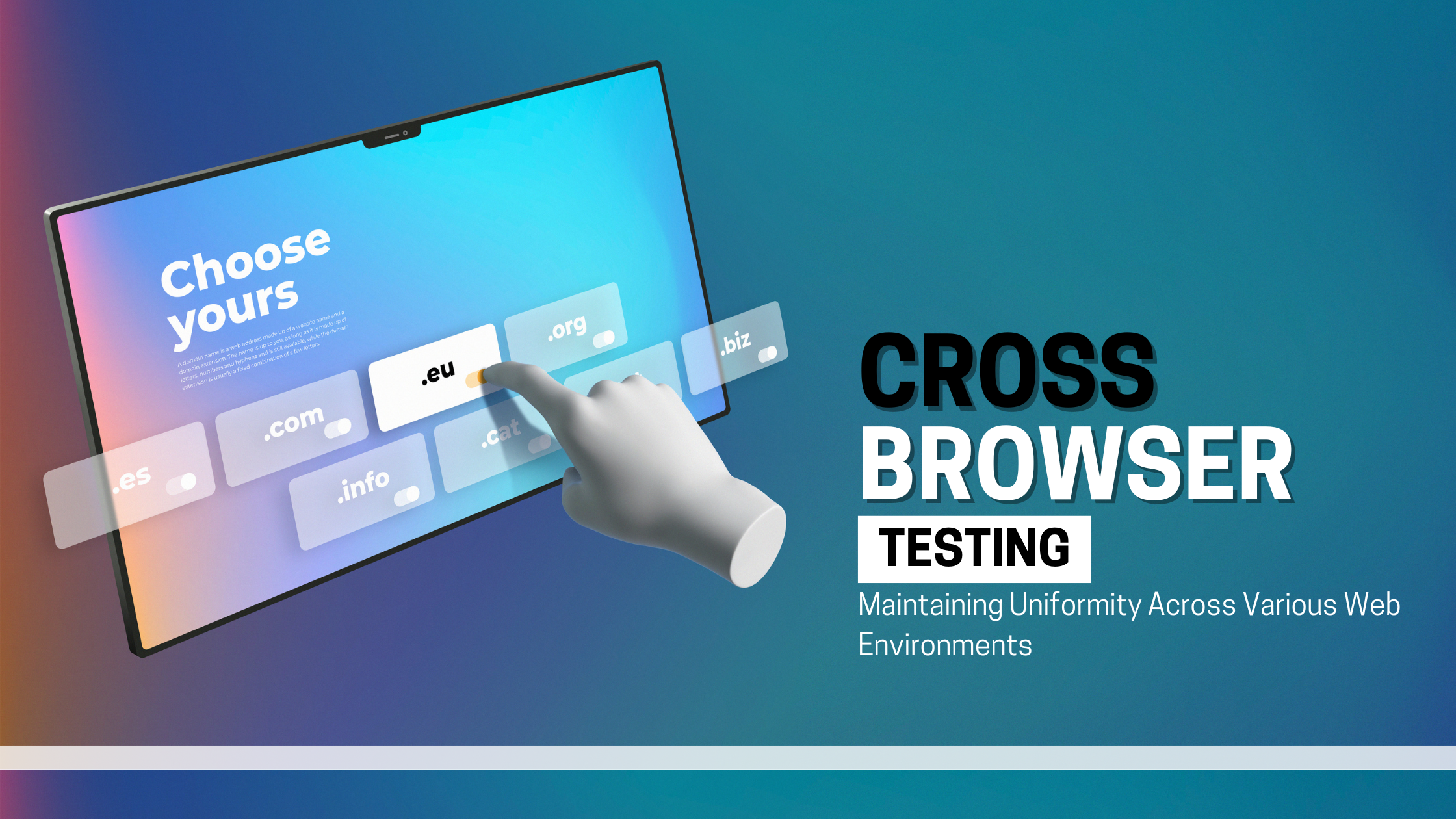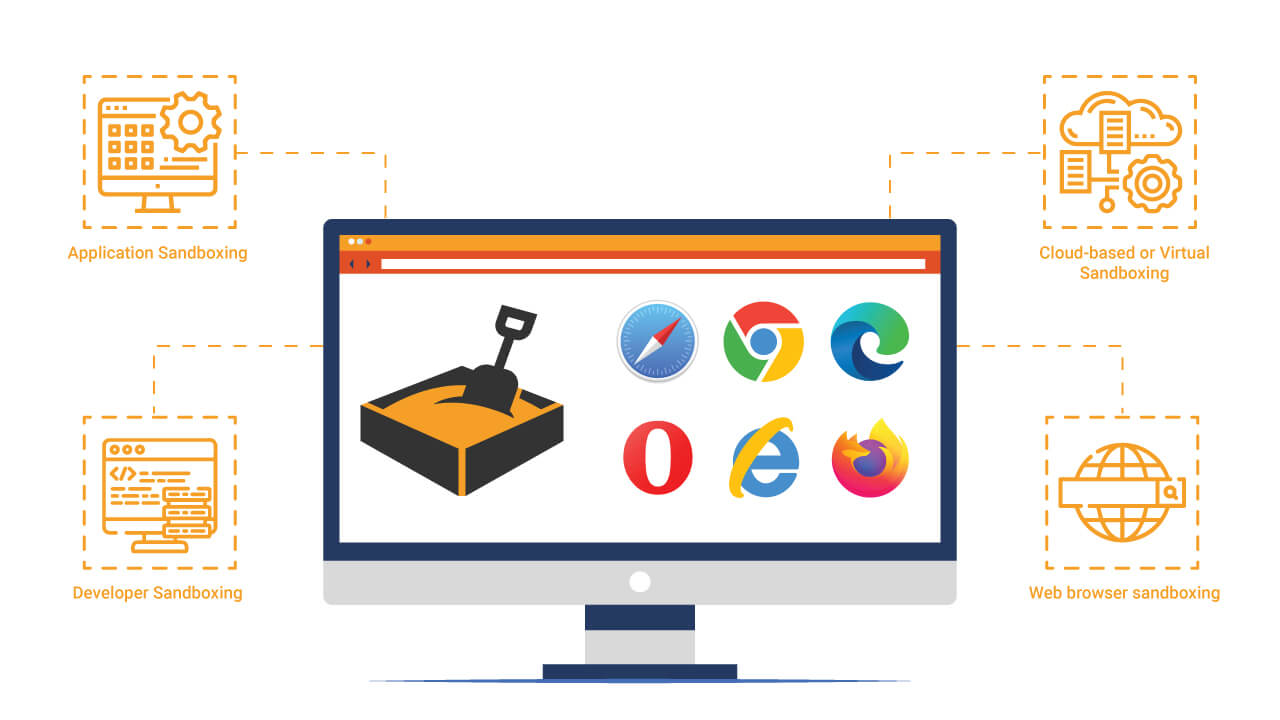Cross-browser Testing: Ensuring Consistency In Different Web Environments
 BugRaptors
BugRaptors
With people getting access to devices that have different operating systems, configurations, and software versions, cross-browser testing has emerged as a significant component of web application development. Since users are likely to choose different browsers based on their preferences, Cross-browser testing helps create a web application that is compatible with different browsers and offers a consistent user experience throughout.
For instance, you have worked on creating an excellent application that offers a super smooth experience to the users working on Firefox. But what if you didn’t check it for offering a similar experience on Safari? In such a case, you are likely to immediately lose a big bunch of users.
As of August 2023, Google's Chrome is the leading internet browser in the world with a global market share of 63.56 percent. However, it is extremely important to consider the 36.44 percent of users who prefer to work on other browsers when planning for an application.
Cross-browser testing is a component of web testing service that ensures your application works effectively across browsers delivering a pleasing experience to your users. helps prevent that by ensuring that your app works correctly on all major browsers.
In this blog, we will aim to highlight every detail of cross-browser testing diving through challenges associated with browser diversity, the importance of cross-browser testing, and learning the best practices that help ensure a smooth user experience in dynamic web environments.
The Challenge of Browser Diversity
Browsers come in many flavors - Chrome, Firefox, Safari, Edge, and numerous others. Each has its rendering engine, JavaScript interpreter, and unique set of features. This diversity poses a significant challenge for web developers. What looks perfect in one browser may appear entirely different, or even broken, in another.
The discrepancy is primarily due to differences in how browsers interpret and implement web standards. These standards, set by organizations like the World Wide Web Consortium (W3C), provide guidelines for writing web pages, ensuring compatibility across browsers. However, even with these standards in place, discrepancies persist.
The Importance of Cross-browser Testing

Cross-browser testing is the process of verifying that a web application works consistently and correctly across different browsers.
Also, Cross-browser testing ensures a website functions consistently on various browsers, enhancing user experience, and accessibility, and reducing compatibility issues, crucial for a seamless online presence and wider audience reach. The practice is indispensable for several reasons:
1. User Experience & Accessibility
Users have varying preferences when it comes to browsers. While some are dedicated Chrome users, others prefer using Firefox or Safari. By conducting cross-browser testing, you ensure that your website offers a seamless experience to all users, regardless of their choices.
Moreover, accessibility is a critical consideration in modern web development. Ensuring compatibility across different browsers helps guarantee that your site is usable by individuals with disabilities who may rely on specialized browsers or assistive technologies.
2. Market Share Considerations
Understanding browser market share is extremely important for prioritizing testing efforts. For instance, Chrome and Safari dominate the mobile market, while Chrome, Safari, and Firefox lead in the desktop space. In simple words, understanding the browsers your target audience favors enables you to allocate resources effectively and ensure maximum coverage.
3. Reducing User Frustration
Inconsistent behavior across browsers can lead to user frustration and a higher bounce rate. If a user encounters a broken feature or a poorly rendered page, they are likely to abandon your site in favor of a competitor's. Cross-browser testing helps minimize such issues, enhancing overall user satisfaction and retention.
4. Maintaining Brand Reputation
A website that functions flawlessly across browsers reflects positively on your brand. It conveys a sense of professionalism and attention to detail, instilling confidence in your users. Conversely, a website or application riddled with browser-specific issues can erode trust and tarnish your reputation.
Strategies For Effective Cross-browser Testing
Effective cross-browser testing ensures a website or application functions uniformly across different browsers, versions, and devices. It identifies and resolves compatibility issues, ensuring a seamless user experience for all users. To ensure consistency in different web environments, consider implementing the following strategies:
1. Taking the Automation Advantage
Automated testing tools, such as Selenium, Playwright, and Cypress, enable you to run tests across multiple browsers simultaneously. These tools can simulate user interactions and evaluate the rendering of your web pages, providing rapid feedback on compatibility. This is why even most of the app development brands engage with automation testing service providers to gain rapid results and compatibility.
2. Use Browser Stack or Similar Services
Browser Stack is a cloud-based testing platform that allows you to perform live, interactive, and automated testing on various browsers and devices. Besides, you can even try to harness similar service tools like Sauce Labs and Cross-Browser Testing to get access to similar capabilities. Using these platforms could enable you to yield invaluable results for testing on real-world devices and gaining accurate output.
3. Use Analytics To Prioritize
One significant practice that could help you plan cross-browser testing is to leverage analytics to identify the browsers and devices that are most popular among your user bases. Doing so could help you focus your testing efforts on the right platforms to ensure maximum coverage where it matters the most.
4. Embrace Responsive Design
Make sure you always design your website with responsive principles in mind to ensure that it adapts gracefully to different screen sizes and resolutions. When you adopt such a practice, it helps significantly in achieving consistency across devices and browsers.
5. Regularly Update & Test
Browsers are continuously updated to improve the browsing quality of users. However, newer versions may introduce compatibility issues. Thus, testers must ensure to stay informed of browser updates and perform regular testing to catch any unforeseen issues promptly.
Conclusion
Cross-browser testing is an indispensable practice for any web development project. It not only ensures that your website delivers a consistent and seamless experience to users, but effective cross-browser testing even complements the performance testing goals associated with your website or application.
Thus, by adopting effective testing strategies and staying vigilant about browser updates, any web development company or IT solutions provider could maintain a positive user experience and uphold their brand's reputation in the ever-evolving landscape of web technology.
Remember, a well-tested website is a reflection of a commitment to excellence and user satisfaction.
Subscribe to my newsletter
Read articles from BugRaptors directly inside your inbox. Subscribe to the newsletter, and don't miss out.
Written by

BugRaptors
BugRaptors
BugRaptors – One-stop Destination for Unparalleled QA Solutions BugRaptors is a trailblazer in QA software testing services. Armed with ISO 9001:2018 and ISO 27001 certifications, our team of 200+ ISTQB-certified testers utilizes cutting-edge test automation tech and advanced methodologies. With a global presence in India, the US, the UK, and Australia, BugRaptors is driving digital transformation through superior quality manual and automation testing services. Contact us at info@bugraptors.com or +1 (510) 371-9104 to elevate your software quality to unprecedented heights!